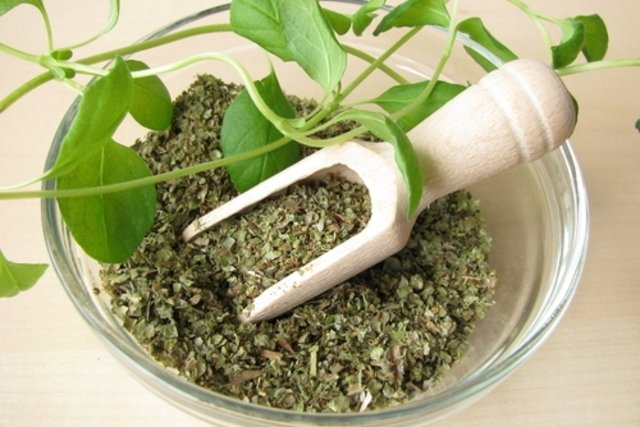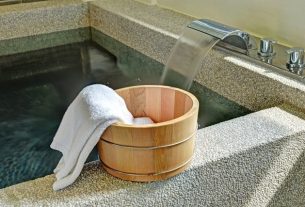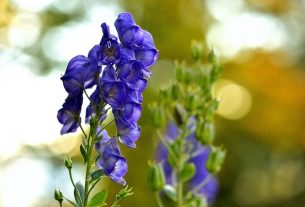Marjoram, also known as English marjoram, is an aromatic herb that has medicinal properties and is normally indicated to help treat digestive problems, such as diarrhea and poor digestion, but it can also be used to alleviate symptoms of stress and anxiety, as it is rich in thymol, carvacrol, terpinene, limonene, tannins and flavonoids, with anti-inflammatory, digestive and calming properties.
The scientific name of marjoram is Oregano marjoram, and the normally used parts of this medicinal plant are the leaves for preparing tea, tincture, capsules or essential oil. Furthermore, marjoram is widely used in cooking to prepare salads, soups or sauces, due to its subtle aroma and sweet flavor.
Marjoram can be purchased in its natural form in supermarkets and street markets, to be used as a seasoning in cooking, but also in other formats for medicinal use, found in health food stores and compounding pharmacies, and should be used under the guidance of a doctor. or the herbalist.

What is it for
Marjoram is indicated to help in the treatment of:
- Indigestion;
- Intestinal or menstrual cramps;
- Stomachache;
- Intestinal gases;
- Diarrhea;
- Loss of appetite;
- Stress and anxiety;
- Insomnia;
- Infectious diseases;
- Irregular menstrual cycle;
- Rheumatism;
- Sprain;
- Dislocation;
- Muscle spasms or pain;
- Joint swelling;
- Toothache;
- Headache or migraine;
- Flu or colds;
- Bronchial cough;
- Asma;
- Sinusitis;
- Plague;
- High pressure.
Marjoram has antispasmodic, expectorant, mucolytic, healing, digestive, antimicrobial, anti-inflammatory, analgesic, antioxidant, calming properties, due to the essential oils in its composition, especially thymol, carvacrol, terpinene, limonene, camphene, eucalyptol and linalool , in addition to phenolic acids, tannins, terpenoids and flavonoids.
Furthermore, marjoram has antidiabetic properties, which help to increase insulin in the blood, and can also be used to help treat diabetes.
Although it has many health benefits, marjoram should not replace medical treatment with medicines, it can be used to complement medical treatment, and should be used with the guidance of a doctor or herbalist.
How to make marjoram tea
Marjoram tea can be used for digestive problems, menstrual cramps, diabetes or headaches, for example.
Ingredients
- 20 g of fresh or dried marjoram leaves;
- 1 liter of water.
Preparation mode
Place the marjoram leaves in water and boil. Then turn off the heat and let it rest for about 10 minutes. Strain, wait for it to cool and drink up to 3 cups a day.
Other forms of use
Marjoram can also be used in the form of an essential oil for aromatherapy or massages, or in the form of capsules or tincture.
1. Marjoram aromatherapy
Aromatherapy can be done using marjoram essential oil to help alleviate respiratory problems, such as coughs, asthma, bronchitis, flu, colds or sinusitis, for example, as well as headaches, anxiety, stress or insomnia.
To perform aromatherapy with marjoram, you must deeply inhale the aroma of the essential oil directly from the bottle, holding the air in your lungs for about 2 to 3 seconds, before exhaling. Repeat inhalation 3 to 7 times, several times a day.
Another way to perform aromatherapy with marjoram essential oil is to place 2 to 3 drops of the essential oil in a little water, inside an electric air freshener or in a room diffuser. The amount of water used varies according to the capacity of the electric air freshener or diffuser. The cloud of smoke or vapor formed allows the aroma to be released throughout the room. Discover other ways to do aromatherapy with essential oil.
2. Marjoram massage
Marjoram essential oil can also be used in relaxing massages due to its pleasant aroma and calming properties. See other benefits of massage with essential oils.
To perform the massage, you should use 10 to 20 drops of marjoram essential oil mixed with 50 mL of a vegetable oil, such as coconut oil or sweet almond oil, for example. Then, apply to the skin, massaging gently with your fingertips, for about 10 minutes.
Before using marjoram essential oil, an allergy test must be carried out, preparing a mixture containing 1 drop of marjoram essential oil in 1 teaspoon of carrier oil, and applying it to the back of the hand or the crease. of the elbow. Wait 24 hours and, if during this period the skin becomes red or irritated, it is not recommended to use marjoram essential oil.
3. Marjoram capsules
Marjoram capsules can be found in health food stores and compounding pharmacies, and can be taken daily, or as directed by your doctor.
Doses may vary according to the amount of marjoram in the composition of the capsules, and therefore its use should only be carried out under the guidance of a doctor or a professional with experience in medicinal plants, with individualized doses.
4. Marjoram tincture
Marjoram tincture can be used orally, diluting 20 to 40 drops of the tincture in a glass of water, then drinking it up to 3 times a day, as per medical advice.
Marjoram tincture has alcohol in its composition and is not recommended for people undergoing treatment for alcoholism, children, pregnant or breastfeeding women.
Possible side effects
Marjoram is not related to side effects, however when consumed in excess it can cause headache and constipation. Furthermore, when used in the form of an essential oil, it can trigger allergic reactions and contact dermatitis in people with very sensitive skin.
Who shouldn’t use
The use of marjoram is not recommended during pregnancy and breastfeeding, nor for girls up to 12 years of age, as this plant can lead to hormonal changes that can influence the baby’s development or the girl’s puberty, for example.
Furthermore, marjoram should not be used by people who have stomach ulcers, heart problems, blood clotting problems, or who are allergic to marjoram or other medicinal plants, such as lavender, mint, basil or sage, for example.
If surgery is necessary, the use of marjoram should be stopped two weeks before and after surgery.
Marjoram should also be used with caution by people with diabetes, as it can lower blood sugar too much and cause hypoglycemia. Know how to identify the symptoms of hypoglycemia.

Sign up for our newsletter and stay up to date with exclusive news
that can transform your routine!
Warning: Undefined array key "title" in /home/storelat/public_html/wp-content/plugins/link-whisper-premium/templates/frontend/related-posts.php on line 12
Warning: Undefined array key "title_tag" in /home/storelat/public_html/wp-content/plugins/link-whisper-premium/templates/frontend/related-posts.php on line 13



